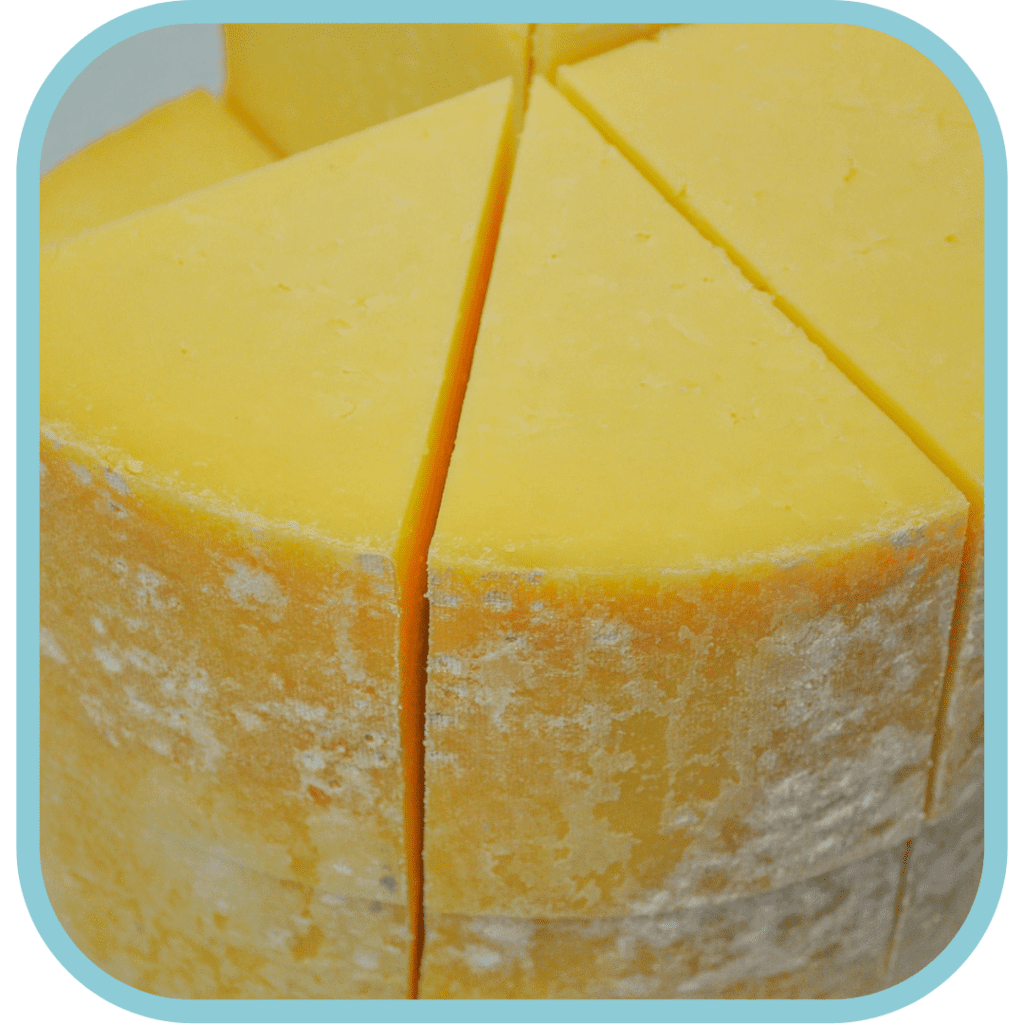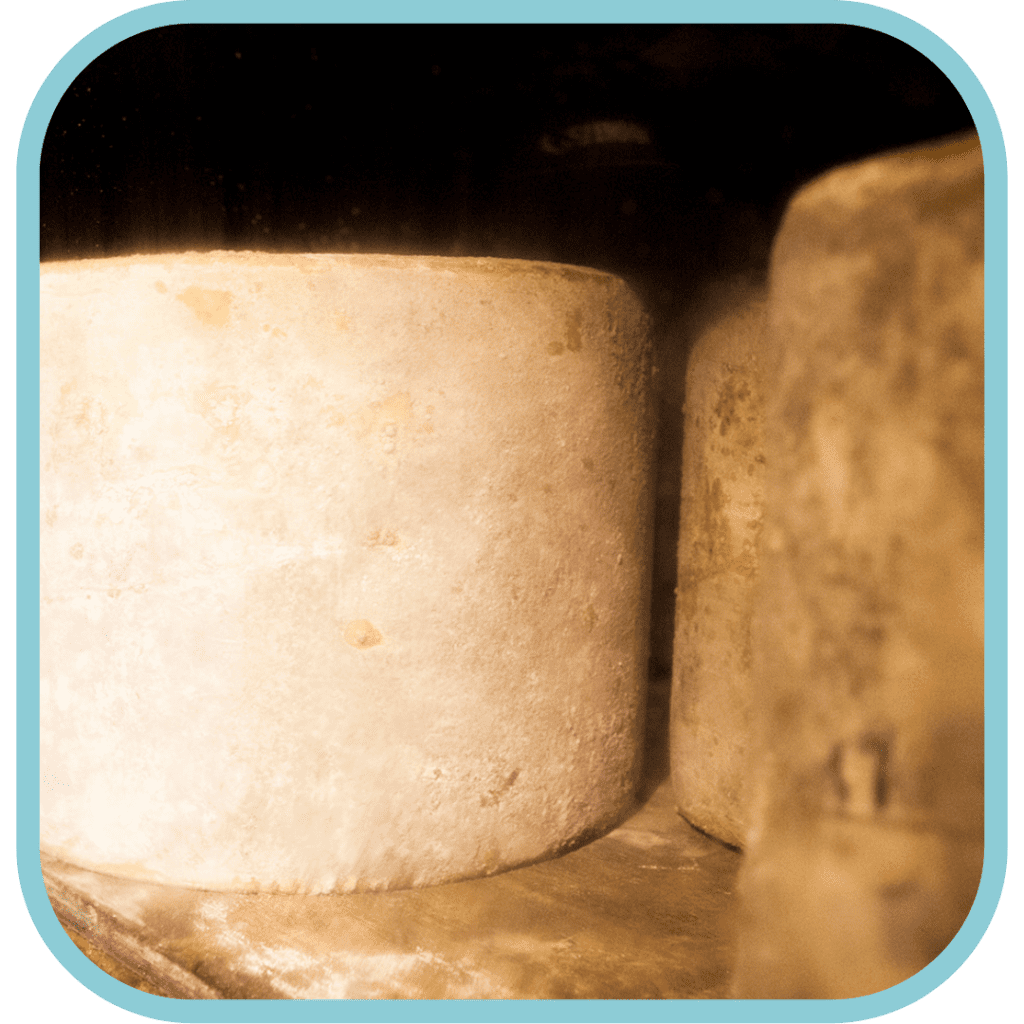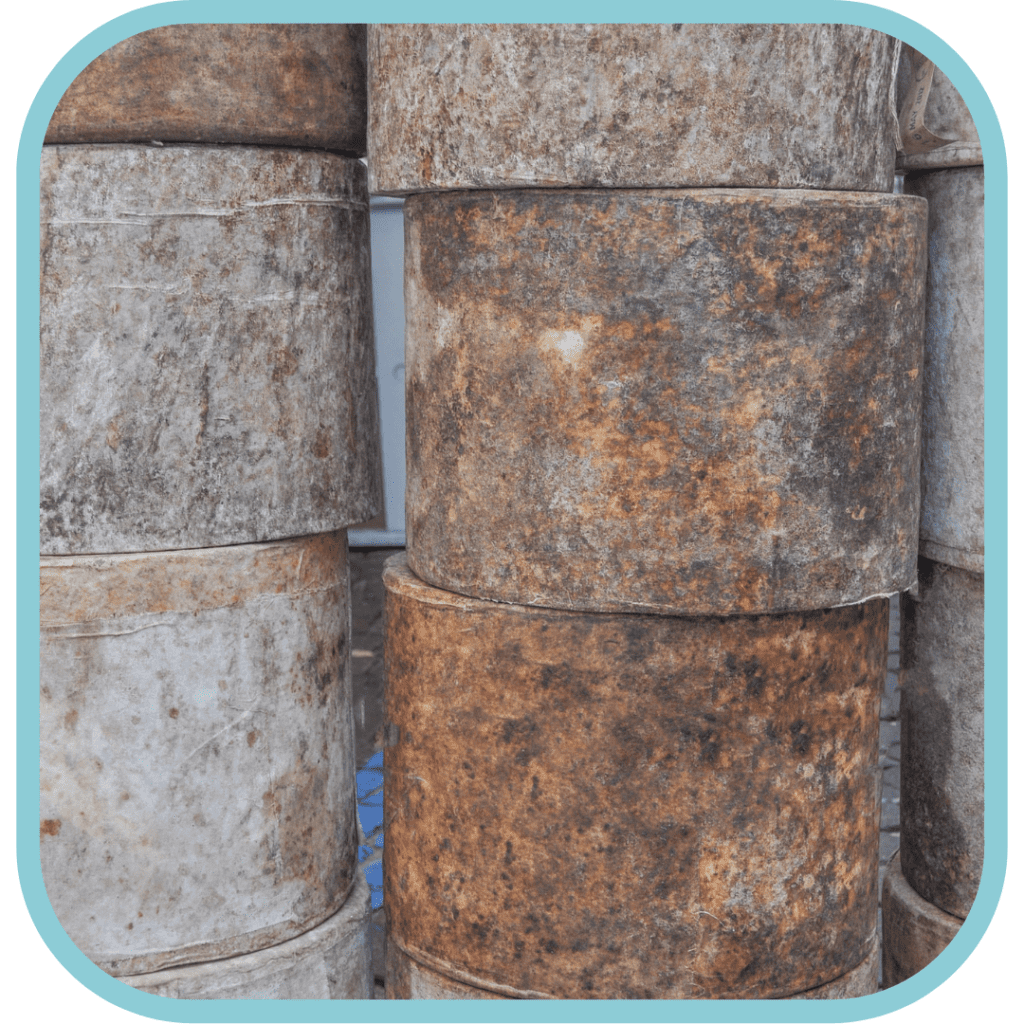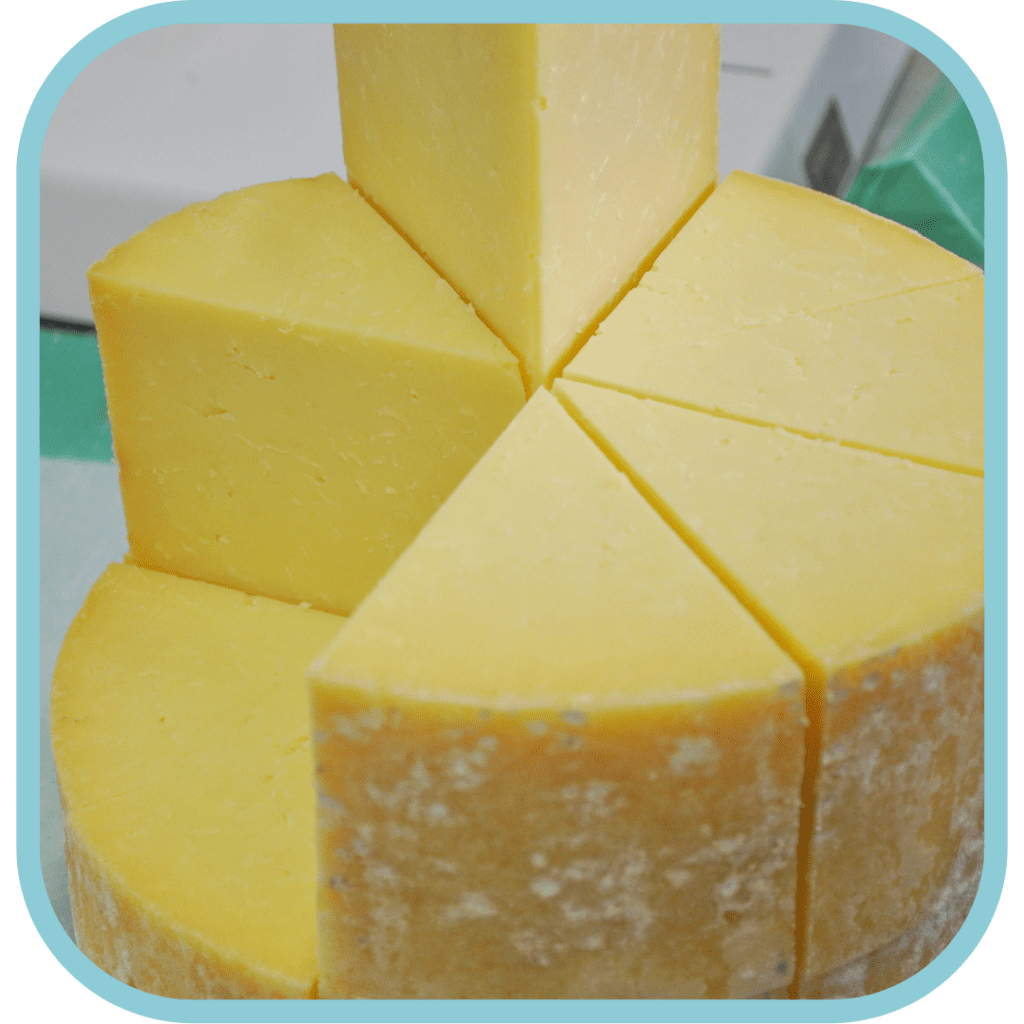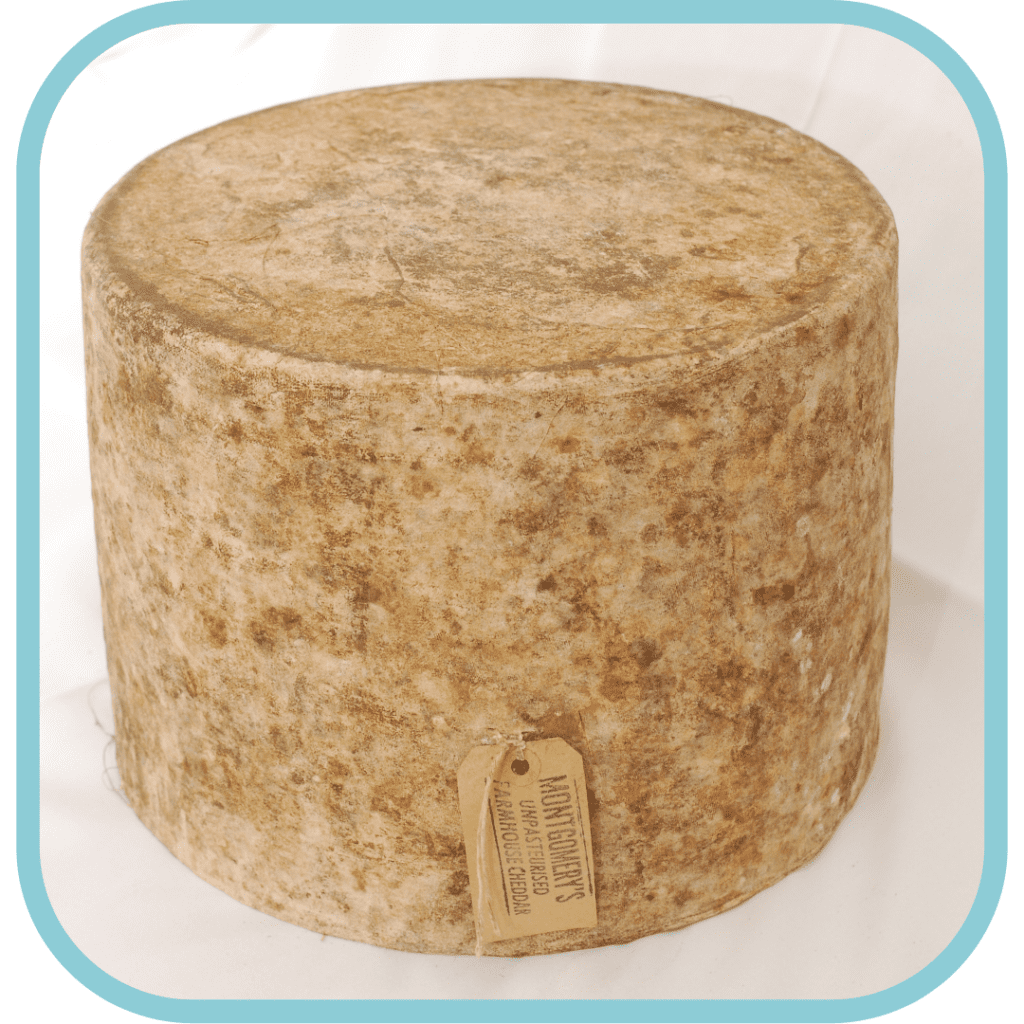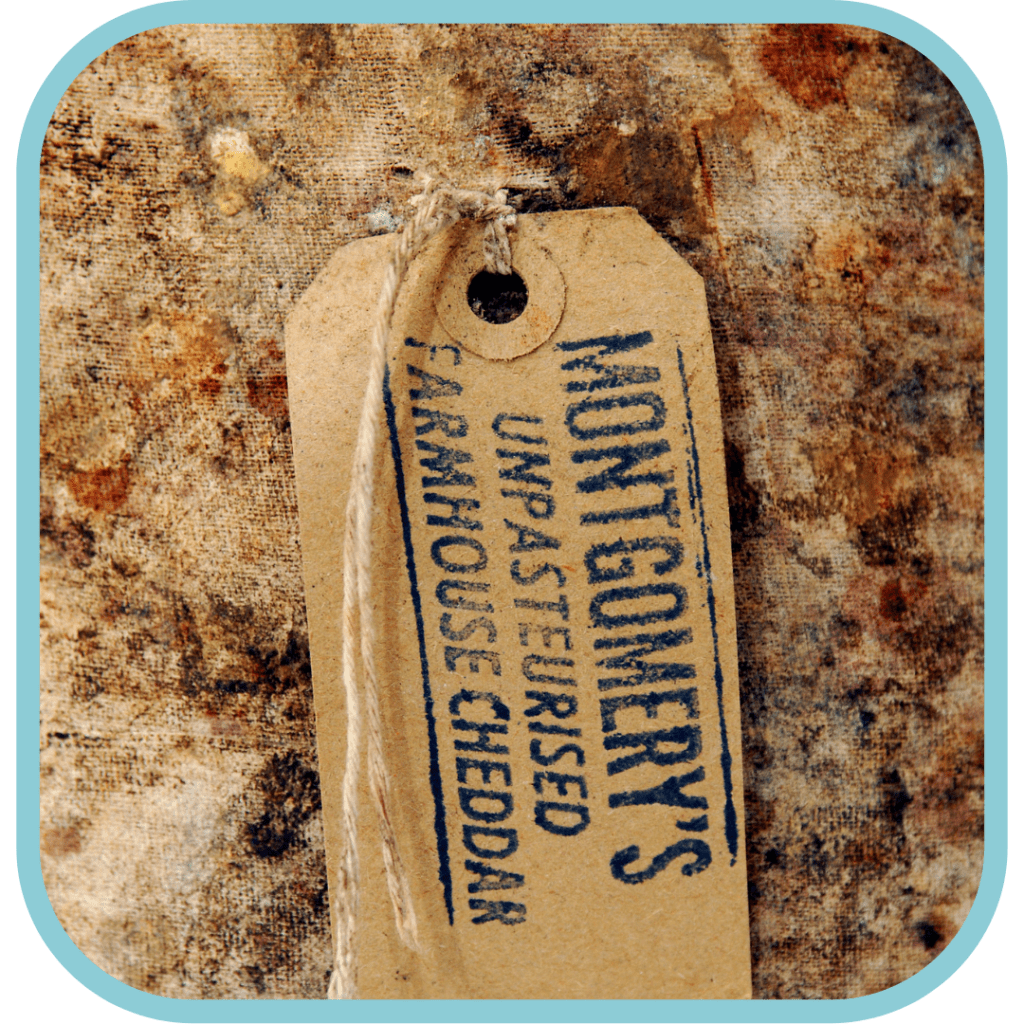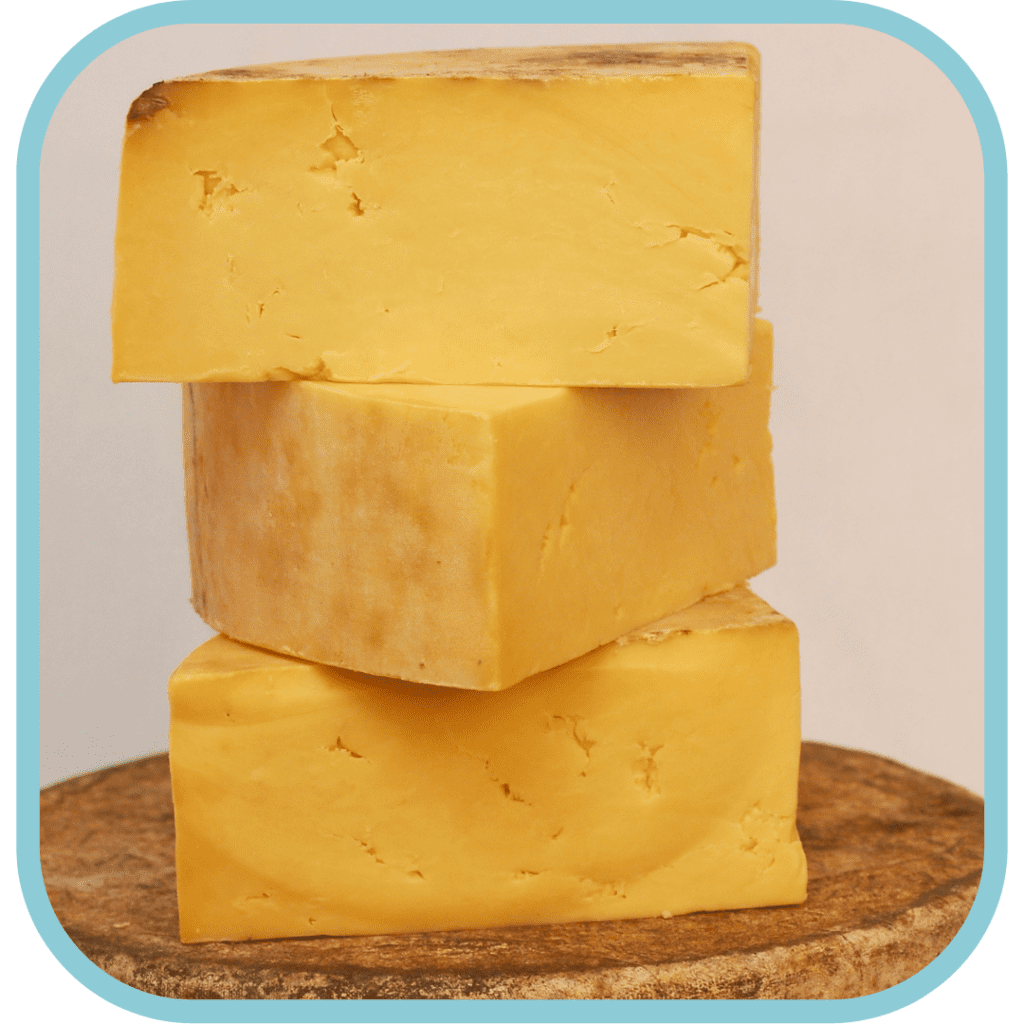What is Cloth Wrapped Cheddar
There are many variants of cheddar. Cheddar has no protection or required link to a cheesemaking process, so cheesemakers have innovated on its theme. In most cases taste and texture have diverged from the traditional English West Country cheddar cheeses.
A small number of cheese makers still make cloth wrapped cheddar in the old style, often with raw milk from their own herds. They cloth wrap 25kg drums of cheese by hand and age them typically 12 months in cellars and caves. The following taste Profile applies to traditional cloth bound cheddars only.
| Taste Profile | Tastes | Dairy Flavours | Other Flavours |
| Taste & Flavour | High (dominant) umami Moderate to high salt Moderate to high acid Low sweet Low bitter* | Lactic Butter Milk | Grass, Straw, Hay, herbs, hedgerow, meadow, mustard, white pepper, horseradish, Meat, Brothy, Farmyard, earthy, musty, yeast, woodsmoke, silage, cellar* |
| Mouthfeel | The cheese is firm to hard in the mouth. It required chewing before it becomes paste. |
| Description | Size and Shape: 22-25kg drum. Approximately 35cm in diameter and 30cm tall. Rind: wrapped, the cloth is beige and mottled with cheese mite dust and light moulds. When the cloth is removed, some cheesemakers clean the rind leaving no evidence of mould. Others leave a crusty edge with light moulds covering the cheese. All will show the imprint of the cloth when examined closely. The rind typically is not eaten but is edible. Paste: the paste is yellow, with small but closed cracks and fissures. There should be no openings in the paste. For more traditional makers, there may occasionally by cracks with developed blue mould. |
| Other notes* | The taste, flavour and texture may vary from the center to the rind, becoming dryer, more savoury and lightly bitter with developing cellar, earthy, mite or musty notes. |
Cheddar is one of Britain’s oldest cheeses. It became the country’s dominant cheese in the mid 19th Century due to its popular savoury and salty profile, flexibility in cooking, ease of manufacture, stability during storage and transport and popularity across age ranges. It remains over 50% of all UK cheese sales today.
Cheddar itself is a town in Somerset in south west England, and in the nearby Mendip hills there are caves which are suitable for ageing cheese. Cheddar cheese has been made in Somerset for at least 850 years, and was first mentioned in 1170 when 4.6 tonnes of cheddar was purchased by Henry II for court use. It used to be said you may only make Cheddar within 30 miles of the local Wells Cathedral.
Cheddar is now made all the way around the world. There are no controls over what may be called cheddar: makers are guided only by the expectations of their consumers. One usually common characteristic is the process of cheddaring. This occurs in combination with the British cheesemaking tradition where curds are recombined after the curd has been drained of whey. In dairies the curd is cut into blocks and repeatedly turned and stacked by hand. Creameries use a cheddar tower to automate the process.
Despite its popularity in some countries, cheddar is often unknown in some European countries. Local cheeses such Gouda (Holland), Provolone (Itlay), Manchego (Spain) and Emmental (Switzerland and France) are the every day heroes. None the less it is the second most popular cheese in the world.
Cheddar variations
Traditional cloth wrapped cheddar makes up less than 1% of cheddar production.
Most Cheddar is made in creameries using cheddar towers and 25kg blocks of cheese are sealed in plastic for maturation. Notably cheddars using non-traditional starter strains and different aging techniques have increased the sweet element and bring light fruit notes such as gooseberry, grapefruit and pineapple. The cheese is commonly also softer, having retained more moisture.
There is a PDO for cheddar called West Country Farmhouse Cheddar Cheese PDO. However its rules of production do not require the cheese to be cloth wrapped as profiled here.
Find our more
See the charlieturnbull.com’s Ultimate Guide to Cloth Wrapped Cheddar for more on cheddar.


